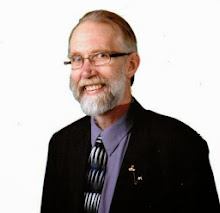Traditional nuclear families, you know, those with two married parents and one or more children—are more likely to use technology to stay in touch during the day than other types of families, according to a Pew Internet Research report. Married couples with minor children have higher rates of Internet and cell phone usage, computer ownership and broadband adoption than other household configurations, found the survey of 2,252 households. (The "married couples" designation included approximately 10 percent couples living together as if married.)
Among the findings:
> 94 percent of married couples with at least one child had Internet service, compared with 70 percent of married couples with no children at home and 90 percent of non-married couples with a child.
> 66 percent of married couples with at least one child had a broadband connection (e.g., cable or DSL), compared with 52 percent of married couples with no children at home and 55 percent of non-married couples with a child.
> 58 percent of married couples with at least one child had two or more computers (and were more likely to have them connected to a home network), compared with 39 percent of married couples with no children at home and 54 percent of non-married couples with a child.
The survey found that couples use their cell phones to connect and coordinate their lives, particularly if they have children at home. Nearly 90 percent of these traditional families have more than two cell phones, compared with 69 percent of married couples with no kids at home and 80 percent of non-married adults with a child. According to Pew, although spouses often go their separate ways during the day, they remain connected by cell phones and Internet communications.
Part of the reason for the disparity between couples with and without children is that those without dependents at home tend to be older. In addition, married-with-children families are notable for both their high levels of education and as having high incomes. One in three of the married/partnered adults in these families (35 percent) have a college degree (among the highest rates of any household) and just 6 percent have not graduated from high school (by far the lowest of any household type). Nearly 40 percent of those married with children have an annual household income of $75,000 or more.
The study also noted that this high degree of connectedness did not result in more face time among family members. According to the report, "Those with multiple communication devices are somewhat less likely to eat dinner with other household members and somewhat less likely to report high levels of satisfaction with their family and leisure time than are families with lower levels of technology ownership."
Still, it seems that families are attempting to improve the quality of their time with one another by going online together: 52 percent of Internet users who live with a spouse and one or more children go online with another person at least a few times a week. Another 34 percent of such families have shared screen moments at least occasionally. In addition, families that own large quantities of televisions and computers are no less likely to share screen time with other family members than those families that have lower levels of technology ownership
Larson note: How do you contect with this type of a family (person) I’m thinking bannor ads might be the key here. Do I hear email blasts ? These are soficited web uses. They know what they are doing, unlike me. Would these same married’s be twitting each other?
Howard Larson
Larson & Associates
Telesales & Target Marketing Professionals for new account acquisition
Making good businesses great and great businesses even better
847-991-0488larsonassoc1975@yahoo.com
http://member.merchantcircle.com/larsonassociates
http://larsonassociates.blogspot.com
http://teamcircle.ning.com/profile/HowardLarson
http://businessiibusiness.ning.com/profile/HowardLarson
https://twitter.com/LarsonAssociate
Subscribe to:
Post Comments (Atom)

No comments:
Post a Comment